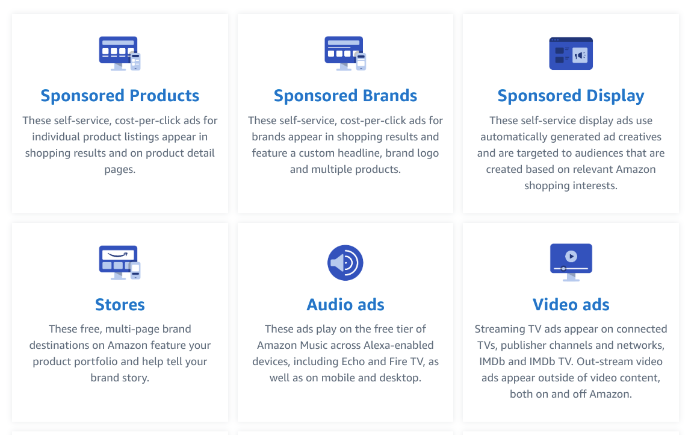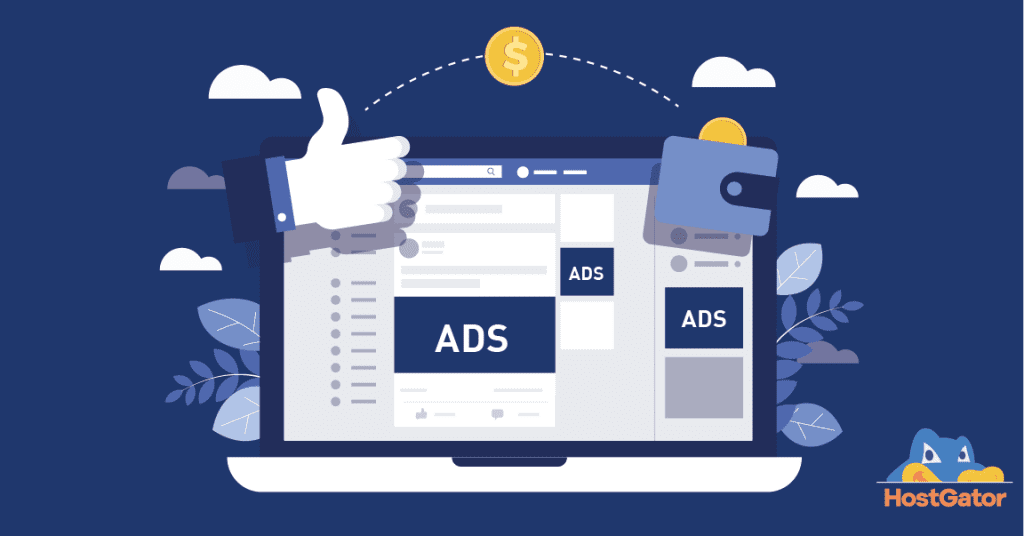
There are several different types of ads on sites. There are three types of ads: Autoplay video ads and Pop-up ads. They are all very annoying but there are ways around them. These tips will help prevent you from getting caught up in the chaos. These tips are not foolproof. Certain types of ads can be more irritating than others.
Autoplay video ads
Many people have seen autoplay video advertisements on websites. But they aren't always a good idea. These ads can be annoying, especially if multiple tabs are open on your computer. Although you can mut autoplay videos they still count in SEO algorithms as a single view. Autoplay videos should be limited to 30 seconds in duration.
According to research by the Coalition for Better Ads, most people dislike autoplay videos. They're annoying, take up precious screen space, slow down browsing, and steal your attention.

Pop-up ads
Google has announced changes to the way it rates mobile ads. Some of the changes include the removal of interstitials that are not required to be dismissed before users can see the main content. Sites that don't use pop-up advertisements will not be affected by the changes. Google's guidelines are very helpful in ensuring that you do not get penalized.
Redirects
Publishers might have trouble with redirects from ads to sites, especially when they're not immediately apparent. Publishers may not know they're having problems until their ad income starts to drop. There are many ways to find out the source of redirects. Confiant, a service that detects ads redirects before they load and identifies cybercriminals behind them, is one way to do this.
Site redirects are common for web publishers who make their money by showing ads. These ads are served through third-party networks and the users don’t realize. They think they are visiting the website of the website owner. Often, they install adblocking software, which negatively affects the publisher’s ad revenue. Redirects are difficult for publishers to detect, because the advertisers serving the ads often change their behavior once they've been approved.
Standard for better advertising
The Better Ads Standards are intended to improve online user experience. These standards were developed from extensive research by Coalition for Better Ads. They were based upon 66,000 respondents in 70 countries. These standards are mandatory for publishers to adhere to in order to improve user experience and quality of online advertising. They are also designed to prevent consumers installing ad blockers.

The Better Ads Standards have been successfully translated into several languages. However, the Better Ads Standards are not a perfect solution. Sites may implement only half or none of the guidelines.
FAQ
How much does it take to advertise on social networks?
If you decide to go this route, you should know that social media advertising is not free. Based on the time spent on each platform, you will be charged monthly.
Facebook - $0.10 for 1,000 impressions
Twitter - $0.20 Per 1,000 Impressions (if you tweet).
Linkedin - $0.30 per 1,000 impressions if you send out invitations
Instagram: $0.50 per 1,000 impressions
Snapchat - $0.60 per 1,000 impressions ($0.40/user)
YouTube - $0.25/1000 views
Tumblr $0.15 for 1,000 impressions text posts
Pinterest - $0.05 per 1,000 impressions per month
Google + - $0.15 - $0.20 per 1 Million Impressions
Tumblr: $0.15-$.20 per 100,000 impressions
Vimeo - $0.20- $0.25 per 10,000 impressions
Soundcloud - $0.20 - $0.0.25 for 1,000,000 plays
StumbleUpon - $0.20 -$0.25 per 1 billion pageviews
Digg: $0.20 – $0.25 per 1,000 diggs
Reddit - $0.20 - $0.0.25 per 1000 Comments
Wordpress – $0.20--$0.25 Per 500 Comments
Flickr - $0.20 -- $0.25 per 5,000 photo uploads
Why use social media for advertising your business?
Social Media Marketing (SMM) allows you to reach customers where they are - on social networks such as Facebook, Twitter, LinkedIn, YouTube, Google+, etc. You can also target certain groups on these networks with keywords.
This advertising strategy is cost-effective as it costs less than traditional methods to market online. It allows you build strong relationships between your potential and existing clients.
It is simple to get started using social media for your business promotion. All you need is a computer or smartphone and access to the Internet.
What is branding exactly?
Branding is a way to communicate who and what you are. It is how people remember your name.
Branding refers to creating a brand that is memorable for your company. A brand is more than just a logo. It includes everything from your physical appearance and the voice of employees.
A strong brand helps customers feel confident in buying from you because they know exactly what they're getting. This gives customers the confidence to choose your products over other brands.
A good example of a well-branded company is Apple. Its brand is known worldwide for its sleek design, high-quality products, and customer support.
Apple's brand has become synonymous with technology. Apple is what people associate with when they see a phone or computer.
Before you launch a new business, it is worth creating a brand. This will give your business a personality and face.
What are the basics of internet advertising?
Internet advertising is an essential part of every business strategy. It is a cost-effective way for companies to reach potential customers. However, there are many different types of internet advertising available. Some are free, while others require payment.
There are many other ways to advertise online. Each method has its benefits and drawbacks.
What do you need information about print advertising
Print advertising is a great medium to communicate with customers. Print advertising is used by many companies to promote their products and services. The goal is to get the consumer's attention.
Print ads are usually short (one page) and contain text, pictures, logos, and other graphics. You may also find sound, animation, video and hyperlinks.
These are the main types of print ads:
1. Brochures - These are large format printed pieces designed to attract people into stores. They often have colorful pictures and eye-catching designs.
2. Catalogues – These are smaller versions to brochures. They are sent to customers who have requested specific information.
3. Flyers - These are small pieces of paper distributed at events such as concerts and fairs. If they are given out at retail outlets, they can be obtained for free, but you must pay for them.
4. Posters – These are larger versions for flyers. These flyers can be displayed on buildings, fences and walls. They are created by computer software programs in order to grab passersby's eyes.
5. Direct mail – This is a direct mailing of letters or postcards directly to customers. These are sent out by companies to remind customers about their business.
6. Newspaper Ads - These advertisements are found in newspapers and magazines. They are usually very long and contain text and images.
What do you need to know about television advertising?
Television advertising can reach a lot of people quickly and is very effective. It was also expensive. However, if you use it well, it can be incredibly powerful.
Although there are many kinds of TV ads to choose from, all share the same characteristics. When planning any TV ad, the first thing you should do is ensure that it fits within its category. It is not a good idea to try and run a lifestyle TV commercial while running a product or service commercial. Your message must be consistent throughout the campaign.
Second, prime-time hours are the best times to air your ads. This is because many viewers are able to relax in front of the TV while watching. You want them relaxed enough that they can focus on you words.
The bottom line is that even if you have a lot to spend, it doesn't necessarily mean you'll be able to get great results. In fact, the opposite may be true. According to University of California research, commercials airing during popular shows are less likely to be seen and sell more products than those which air during unpopular shows. So, if you spend a lot of money on TV advertising, ensure you do it right.
Is there a way for me to get free traffic?
Refers to traffic that comes from organic search results, without the need for advertising. This type of traffic is called natural or organic traffic. You can get traffic free of charge by using article marketing, social media marketing and blogging.
Article marketing is one of the most effective ways to get free traffic. This is because it has a very low cost per click (CPC). Paying ads can be more costly than CPC. Article marketing is also known as content marketing.
Social Media Marketing - Social media sites like Facebook, Twitter, and LinkedIn allow you to promote your business through advertising. These social media platforms can be used to post updates and share photos. You may also build relationships with potential customers. Many businesses choose to pay for ad space on social media websites because they want to reach a wider audience at a lower price.
Blogging – Another way to generate traffic for free is to blog. Writing quality content that people like reading will help you attract visitors. After you attract visitors to your blog, you can make money by selling products or other services.
Email Marketing: Email marketing is a proven method to increase traffic to your website. Sending emails regularly is a good strategy to grow your list of subscribers and eventually sell them something.
Statistics
- It's 100% reliant on your website traffic. (quicksprout.com)
- Advertising's projected distribution for 2017 was 40.4% on TV, 33.3% on digital, 9% on newspapers, 6.9% on magazines, 5.8% outdoor, and 4.3% on radio. (en.wikipedia.org)
- It collects money from the advertisers, keeps 32% for its role in facilitating the process, and the remaining 68% goes to the publisher (you). (quicksprout.com)
- Worldwide spending on advertising in 2015 amounted to an estimated US$529.43 billion. (en.wikipedia.org)
External Links
How To
How to place ads on your site
Ads are essential for any business. They allow you to reach potential customers and keep them coming back.
Advertisements allow you to promote products and services without spending money.
Google Adsense is a way to display image or text ads on your blog or website.
Google Adsense lets you earn revenue for each click on the ad links on your website. It doesn't take any code to create your ads.
To get started, just sign up for a free account at www.google.com/adsense. These are the next steps:
-
You can create ads with the Ad Builder tool. You can create a variety of ads with the Ad Builder tool, including text ads, images, videos, and interactive ads.
-
After you have created your ads, upload them to AdSense. To do this, select "Upload" under the "My Ads" section in the left-hand navigation bar.
-
Next, include keywords related to the product or service you are advertising so that it appears in search results for your specific niche.
-
Copy and paste your ads to the relevant areas of your site. After you do this, your ads will automatically be uploaded to your website.
-
When visitors click on one of your ads, they'll be directed to another page on your site where they can purchase your products and services.
-
When someone clicks on an AdSense ad, earnings are transferred to your AdSense account.
-
Click the My Account tab to see reports that detail the performance.
-
Your earnings can also be downloaded as a CSV.
-
If you want to increase your earnings, you can make changes to your ads or change your target audience.
-
You can also stop or delete ads at any point.
-
For any questions or concerns, you can contact us.